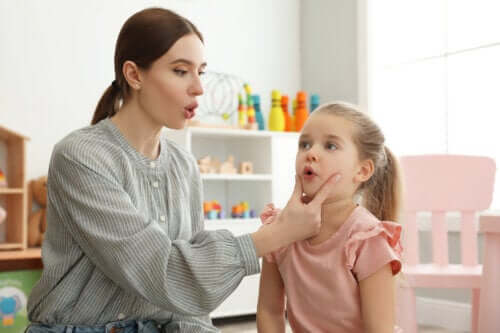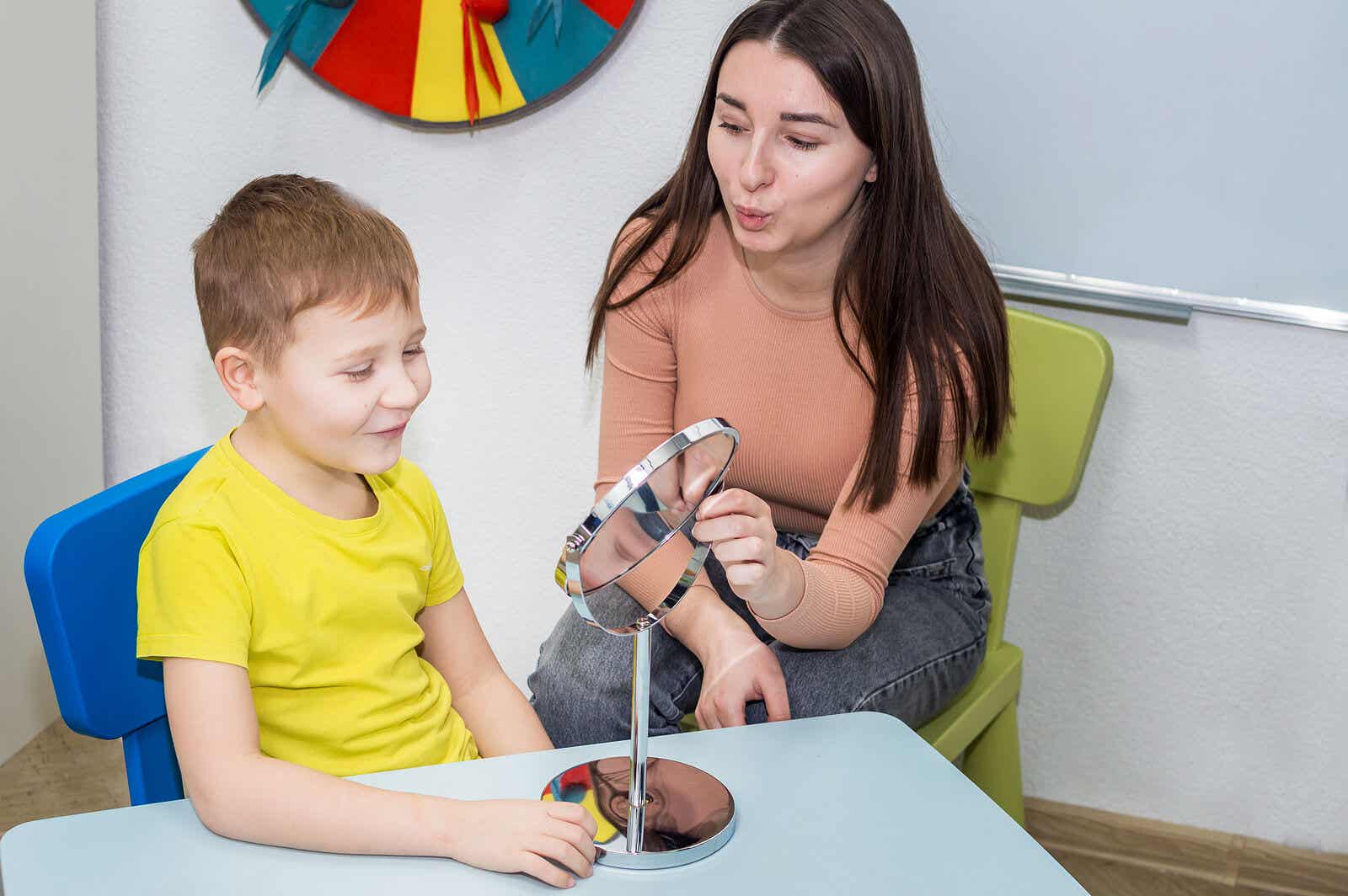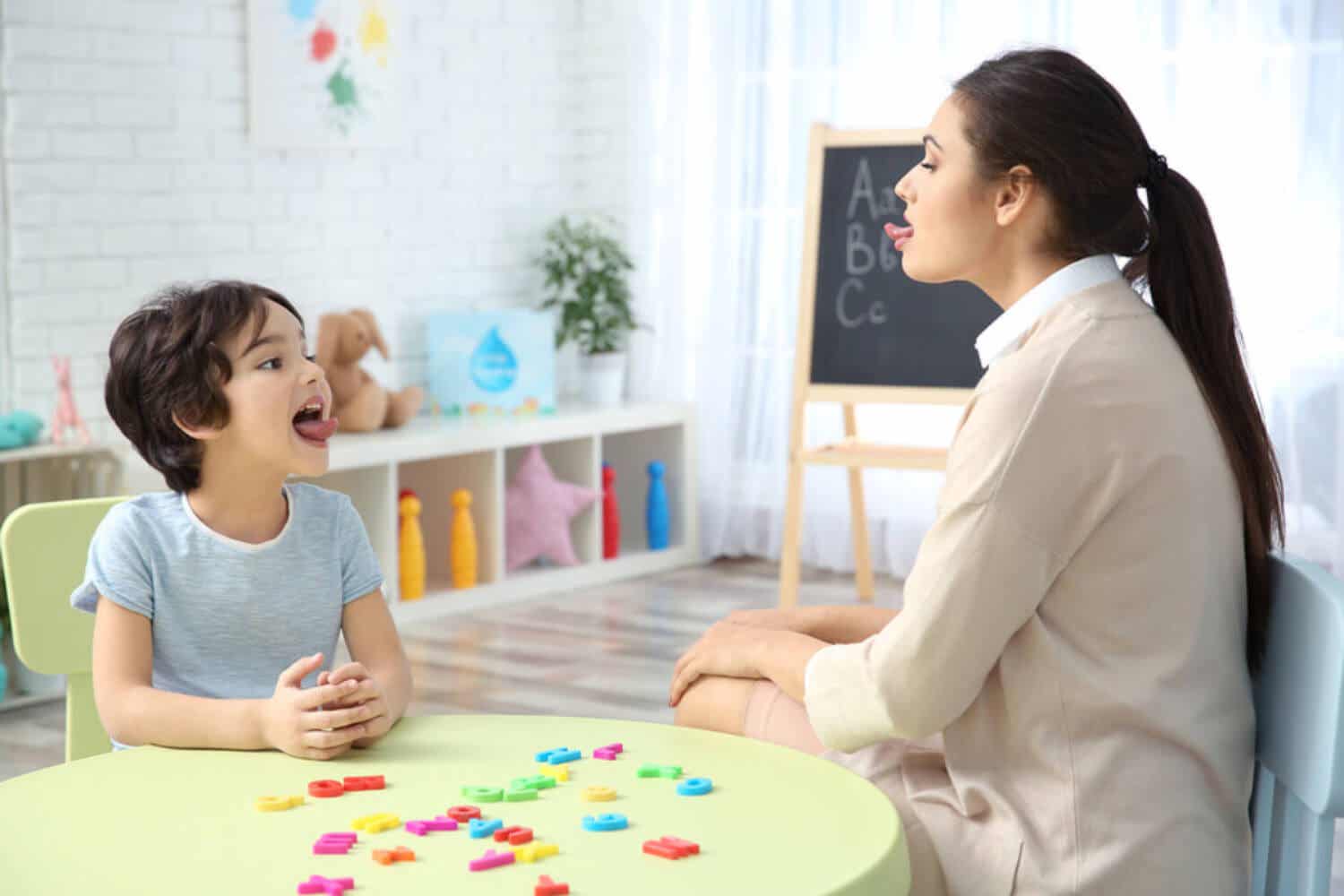Orofacial Praxis and How to Put it Into Practice

When children suffer from some kind of alteration in their speech organs (lips, tongue, jaw, cheeks, palate) and, as a result, they develop articulation or swallowing problems, you should visit a specialist. Possibly, a specialist will talk to you about orofacial praxis.
So, as soon as you identify these difficulties, you should go to a specialist to work on improving your children’s tone and mobility. In order to achieve this goal, the specialist will talk to you about orofacial praxis. Therefore, in this article, we’ll tell you what this is and how to put it into practice at home.
What is orofacial praxis?
Orofacial praxis is organized movements from the speech organs to perform certain actions, such as talking, blowing, and smiling.

These are simple exercises that children must carry out with their mouths, lips, and cheeks. They’re perfect for kids with language development issues or swallowing problems. If they practice these exercises they’ll strengthen their orofacial tone. Furthermore, they’ll prepare the muscles in that specific area to use them properly.
How can children put these exercises into practice?
In order to put these exercises into practice, children should be with an adult, especially a speech therapist. This way, the therapist will show them what the exercises are and kids will imitate the movements and gestures properly. Furthermore, children can stand in front of a mirror and watch how they do it.
The following are some exercises that children with articulation or swallowing problems can carry out. Besides, these exercises are classified according to the organ they need to exercise (lips, tongue, jaw, cheeks, veil of the palate).
Orofacial praxis: lips
- Press your lips together as if you were going to kiss someone.
- Smile widely, showing your teeth.
- Smile widely without showing your teeth.
- Bite your lower lip with your upper teeth. Then, bite your upper lip with your lower teeth.
- Make your lips vibrate.
- Hide your lips, and then show them in rest position.
- Pronounce the vowels out loud, and repeat them while increasing the speed.
- Place a pencil on your upper lip and hold it for a while.
- Slurp from a straw.
Tongue
- Make circular movements with your tongue inside your mouth.
- Make circular movements with your tongue over your lips.
- Try to touch your nose with your tongue.
- Try to touch your chin with your tongue.
- Move your tongue to the left and to the right with your mouth open.
- Push your left and right cheeks with your tongue.
- Take your tongue out and back in with your lips closed.
- Lick your lower and upper lip with the tip of your tongue.
- Take the tip of the tongue out and bite it.

Jaw
- Open and close your mouth using fast movements.
- Pretend you’re eating something while chewing imaginary food.
- Open your mouth widely, as much as you can.
- Move our lower jaw from left to right.
- Move your lower jaw from back to front.
Cheeks
- Inflate both your cheeks.
- Inflate your left cheek.
- Blow up your right cheek.
- Inflate your cheeks alternately.
Veil of the palate
- Cough intentionally.
- Make gargles without water.
- Pretend you’re yawning.
- Breath air in through your nose and breath it out through your mouth.
- Breath air in through your mouth and breath it out through your nose.
- Say out loud J, K, and G.
Can children perform orofacial praxis at home?
As you were able to see, orofacial praxis combines simple exercises, which don’t require additional accessories or materials to perform. Therefore, they’re perfect to practice at home. However, you should always follow the instructions from your child’s speech therapist or specialist.
All cited sources were thoroughly reviewed by our team to ensure their quality, reliability, currency, and validity. The bibliography of this article was considered reliable and of academic or scientific accuracy.
- ASPRONA (s.f.) Las praxias bucofonatorias. Programa de intervención miofunciona. ASPRONA (Asociación protectora de personas con discapacidad intelectual o del desarrollo): Plena Inclusión Castilla y León.
